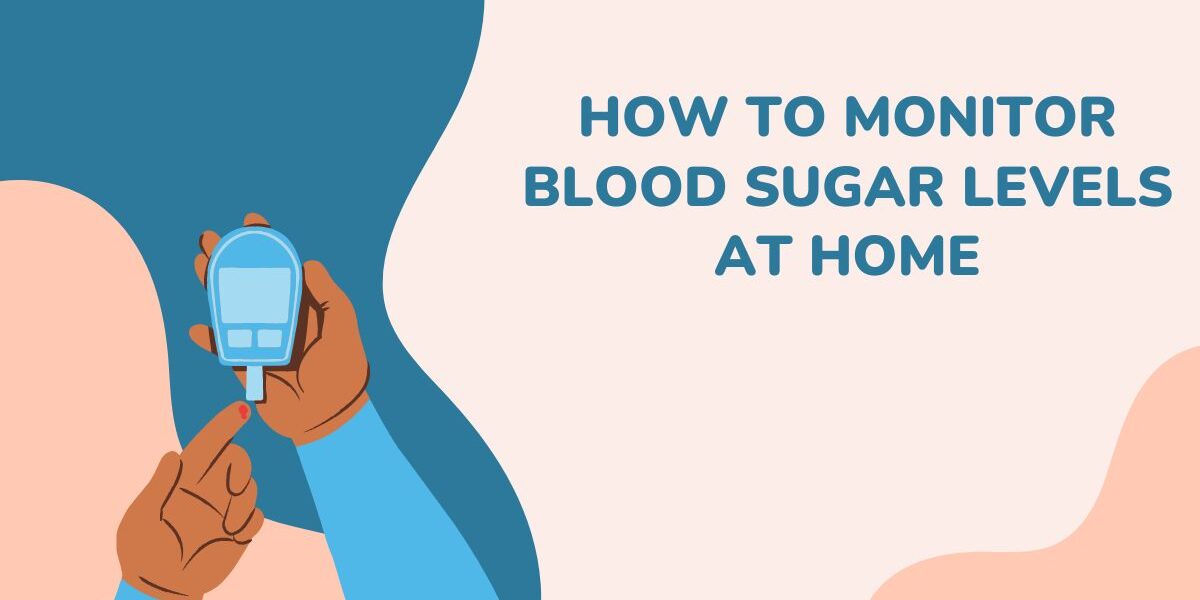Monitoring blood sugar levels at home is an essential practice for managing diabetes effectively. Whether you’re newly diagnosed or have been managing diabetes for years, regularly monitoring your blood glucose levels can help you make informed decisions about your diet, exercise, and medication. In this guide, we’ll walk you through how to monitor blood sugar levels at home and provide tips on choosing the right glucometer.
Why Monitoring Blood Sugar Levels at home is Important
Regular blood sugar monitoring provides critical insights into how your body responds to different foods, activities, and medications. By keeping your blood glucose levels within your target range, you can reduce the risk of complications such as heart disease, nerve damage, and vision problems.
Step-by-Step Guide to Checking Blood Sugar at Home
- Gather Your Supplies Before you start, make sure you have all the necessary supplies:
- A reliable glucometer (blood glucose meter)
- Test strips that are compatible with your glucometer
- A lancing device and lancets
- Alcohol wipes or soap and water to clean your hands
- A logbook or diabetes app to record your results
- Wash Your Hands Clean hands are crucial for accurate readings. Wash your hands with warm water and soap, then dry them thoroughly. Avoid using hand sanitizers or lotions before testing, as these can affect the accuracy of your results.
- Prepare the Lancing Device Insert a fresh lancet into the lancing device. Adjust the depth setting based on your skin’s thickness.Many devices have an adjustable depth to make the finger prick more comfortable.
- Insert a Test Strip into the Glucometer Turn on your glucometer and insert a test strip. Ensure that the strip is properly placed, as indicated by your glucometer’s instructions.
- Prick Your Finger Use the lancing device to prick the side of your fingertip. The side of the finger is less sensitive than the pad, making it a better choice for blood testing. Gently squeeze your finger to obtain a small drop of blood.
- Apply Blood to the Test Strip Carefully touch the edge of the test strip to the drop of blood. The strip will draw in the blood and display your blood glucose level within a few seconds.
- Record Your Results Note the reading in your logbook or diabetes app. Tracking your blood sugar levels over time helps you.Healthcare provider identify patterns and make necessary adjustments to your management plan.
- Dispose of the Lancet and Test Strip Safely dispose of the used lancet and test strip in a sharps container or another puncture-resistant container. Never reuse lancets or test strips, as this can lead to inaccurate readings and increase the risk of infection.
Tips for Accurate Blood Sugar Monitoring
- Test at Consistent Times: Monitoring your blood sugar at the same times each day. Such as before meals and before bedtime—can provide a more accurate picture of your glucose levels.
- Understand Your Target Range: Work with your healthcare provider to determine your target blood glucose range, and strive to stay within it.
- Stay Hydrated: Dehydration can affect your blood sugar levels. Make sure to drink enough water throughout the day, especially before testing.
- Rotate Testing Sites: If you frequently test your blood sugar, rotate between different fingers to avoid soreness and calluses.
Choosing the Right Glucometer: What to Look For
With so many glucometers on the market, selecting the right one can be overwhelming. Here are some factors to consider:
- Accuracy: Look for a glucometer with a reputation for accuracy. Some models are even FDA-approved for accuracy standards.
- Ease of Use: Choose a device with a simple interface, clear display, and easy-to-handle test strips.
- Memory Storage: A glucometer with memory storage can save your readings, making it easier to track your blood sugar levels over time.
- Size and Portability: If you’re on the go, a compact glucometer that fits easily in your bag or pocket can be a great choice.
- Connectivity: Some glucometers can sync with smartphone apps, allowing you to track your results digitally and share them with your healthcare provider.
Best Glucometers for Diabetics
While the best glucometer for you will depend on your specific needs, here are a few top-rated options:
- Accu-Chek Guide: Known for its accuracy and user-friendly design, this glucometer also features Bluetooth connectivity to sync your results with a smartphone app.
- Contour Next One: This device is praised for its accuracy and affordability. It also has a smart light feature that indicates whether your reading is within range.
- OneTouch Verio Reflect: With its color-coded feedback and personalized insights, this glucometer helps you better understand your blood sugar trends.
Conclusion
Monitoring your blood sugar levels at home is a vital part of managing diabetes. By following the steps outlined in this guide and choosing the right glucometer, you can gain better control over your health. Remember to consult your healthcare provider regularly to review your readings and make any necessary adjustments to your diabetes management plan.





